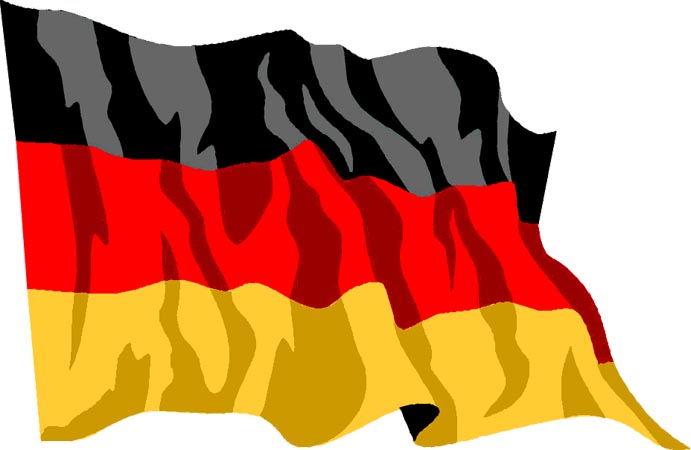Family-run Berlin foundry to move after 112 years
 Berlin - The suburban German S-Bahn train rumbles towards Berlin's Bundesplatz station, offering passengers a glimpse of a nearby art foundry, its yard littered with abandoned metal sculptures and moulds.
Berlin - The suburban German S-Bahn train rumbles towards Berlin's Bundesplatz station, offering passengers a glimpse of a nearby art foundry, its yard littered with abandoned metal sculptures and moulds.
In the adjacent workshop sparks fly from furnaces where workers wear protective clothing and pour molten metal into casts. Sculptors from around the world occasionally arrive at the premises, eager to try out their ideas and realise them together with the bronze moulders.
Founded in 1897, the Noack family's Fine Arts Foundry has flourished for more than a century in the city's tranquil Friedenau district, despite the years of disruption during the two world wars.
Now, after a century of activity in Friedenau, the foundry that was opened by Hermann Noack has announced it is to move to a new location on the banks of the River Spree, near Charlottenburg Palace, in early 2011.
Noack's manufacturing line includes bronze casting with the sand and lost wax method, carving, and the assembly of sculptures up to restoration and patination.
Everything at the foundry is made from one cast - ranging from the initial models to the final work of art. "That way we guarantee a very high quality standard in each section of our company," according to a firm hand-out.
Famed British sculptor Henry Moore was a Noack customer for 30 years, often flying in from London in the 1960s and 70s to consult with company workers about his latest commissions.
Moore admired the Berlin's company's skill in merging traditional craftsmanship with modern manufacturing technologies, and claimed that Noack was "the world's best art foundry." His links with the firm lasted until shortly before his death in 1986, aged 88.
Evelyn Hase, an employee at Noack for the past 45 years, smiles when recalling his visits, claiming they generated excitement among the staff at the time of the city's troubled division.
"He (Moore) liked to know what we were up to. As I had learned English at school, I would sometimes serve as an interpreter on his visits," she told the German Press Agency dpa.
Numerous Moore sculptures - all cast at Noack - are found in Germany. When his commissioned Large Two Forms piece was set in the grounds of the Bonn Chancellory in 1979, the then West German chancellor Helmut Schmidt dubbed the work "an expression of humanity."
Whether it is a bronze by Moore in front of the House of World Cultures, the Victory Column at the "Grosser Stern" or the John F Kennedy memorial plaque at the Schoeneberger Rathhaus, Noack company craftsmanship is to be seen all over Berlin.
Even the war-damaged Quadriga atop the Brandenburg Gate was reconstructed at the foundry.
Twentieth century artists of the calibre of Moore, Georg Kolbe, Kaethe Kollwitz, Renee Sintenis, Bernhard Heiliger, Kenneth Armitage, Joseph Lonas, Anselm Kiefer, Joseph Beuys, Markus Lueppertz, Rainer Fetting and Thierry Noir all had dealings with the Noack foundry at one time or another.
One whose links have lasted close on 50 years is Lonas, the US- born sculptor who arrived in Berlin on a Fulbright Scholarship in 1953 and stayed.
Lonas, who has been a professor at Berlin's Academy of Arts for more than 25 years, has cast numerous bronze and stone projects at the Noack foundry.
"There was a period of about 10 to 12 years when I was working intensely on major projects in Berlin public places. They often took two to three years to develop and execute.
"But I liked the pressure. It had meaning for me," says Lonas. Today the sculptor's works are scattered about the city districts of Kreuzberg, Charlottenburg and Zehlendorf.
One of his early Berlin works was a sculpture commemorating Germany's popular post-war Social Democrat leader Kurt Schumacher, in Reinickendorf.
"It was not in the traditional bronze form but in concrete, with convexly bent steel metal plates, incorporating a portrait relief of Schumacher and an inscription.
"At the time, the design raised eyebrows in some quarters," he recalls. "Some SPD politicians were unhappy at my portrayal of the labour leader so l asked them: 'What do you want to do, put Kurt Schumacher on a horse?'" the 84-year-old chuckles.
Two members of the Noack family business dynasty, Hermann Noack senior, 77, and his 43-year-old son and namesake, are steering the relocation plans.
Hermann Noack junior, the firm's business director, says the move is necessary due to a continuing boom in work and their being no room for enlargement of the Friedenau premises.
The company plans to invest 8 million euros (10.4 million dollars) in new production facilities and offices on a 10,000 square metre former coal depot site.
An additional 5 million euros is to be spent later on a foundry museum building, a cafe, sculpture gallery and artist studios, with part of the cost being covered by a grant from the European Union. (dpa)